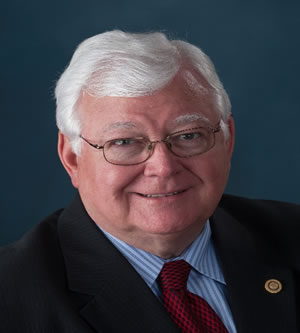Hazard Identified; What Next?
As we’ve discussed in recent articles, once a hazard is identified as legitimate, it needs to be mitigated. A time-tested approach is what is known as The Industrial Hierarchy of Controls. While effective if applied properly, we must consider the human interface when utilizing the hierarchy of controls. A quick refresher of the hierarchy of controls will remind us that it is historically comprised of 4 components: Substitute/Eliminate, Engineer, Administrate and PPE. Depending upon what it is we’re trying to control, any one component could be effective, or a combination might be called for to mitigate the hazard.
Initially, when using the hierarchy, we would prefer to substitute or eliminate the hazard if possible. Eliminating is obviously the simpler action. Let’s say we have a board with protruding nails laying in a walkway. We don’t need the board for the completion of our task, so we simply remove the nails and discard or re-use the board, thus eliminating the hazard.
Now, let’s say we’ve been using a particular cleaning compound. A revised MSDS reveals that it contains a carcinogenic component in its composition. Not wanting to expose anyone to the chemical hazard, we now have to determine how to control that hazard. We need to use a cleaner in order to complete our task. The question now is, How? A bit of research finds that there are several other cleaners that perform as well, but they have no carcinogens in their composition. In this case we can opt to substitute a new, hazard-free cleaner for the old cleaner and complete the task as desired.
To Engineer a hazard control may take a group of professionals with specific skill sets. Depending upon how complex the hazard control may be, it’s possible that you may require certain experts in a particular field, or simply a creative individual with a practical solution. Using an example from my own work history, let’s solve an excessive noise issue. In a compressor building, we had monitored SPL’s of 121dba. That is loud by anyone’s standards! Even with double hearing protection, the long-term effects on workers were undesirable. Our solution needed to be the best in terms of long-term performance and protecting our employees. An assessment revealed that the manifold/muffler systems used on the 2-cycle, gas-burning engines produced a harmonic conducive to extreme sound levels at the RPM’s the engines operated at. After consulting with numerous specialists, the determination was to install new, quieter manifold/muffler systems on the engines and use sound-deadening, portable barriers during maintenance work. What we did was use a combination of substitute and engineer to control the hazard.
Sometimes, it’s a matter of removing people as opposed to removing a hazard, to arrive at the best solution for hazard control. During summer months when temperatures are highest (and employees working outside are most exposed to heat stress) many companies will arrange work schedules to compensate for the heat. It may simply be a matter of having employees arrive earlier in the day, or working later at night to remove them from the exposure to the hazard of heat stress. In this case, the best hazard control is administrative.
Finally, we arrive at what has been considered the last control in the hierarchy. PPE is the only control that is always utilized in the workplace. While the other controls can either be combined or used exclusively, PPE is always used with any of the other controls. While selection of PPE will be determined by the level of hazard exposure, most employers require a minimum of ANSI-spec hard-hat, safety glasses, gloves and safety boots/shoes for any task undertaken at their workplace. PPE is considered by many Safety professionals to be the last step in any risk assessment. The logic being, if you’ve done a proper assessment and utilized the hierarchy of controls effectively, then theoretically, PPE should not have to be called upon to protect the worker. In simpler terms, if your PPE kept you from getting hurt, it’s possible that you didn’t conduct a thorough risk assessment.
The Human Interface – A Benefit or a Detriment?
While the hierarchy of controls can be a wonderful Safety tool, it only is as effective as the individuals utilizing it. Sounds logical, but let’s start factoring in human elements. Such things as fatigue, distraction, lack of training, rushing (getting in a hurry), poor communication, or lack of/poor supervision (leadership!) among others, can all contribute to less-than-effective hazard control. A workplace can have the best safety processes in place, but if the end-user (the worker) is not mentally engaged in that process, it may be all for naught. So, what to do?
Since we’re now dealing with human interface, we introduce other human factors. Such factors as: empowerment, positive reinforcement, proper communication, personal intervention and coaching/teaching. All these are proactive human factors and are critical when countering the afore-mentioned detrimental factors. The secret to using these proactive factors is simple; use them consistently and without fail. Many in the Safety profession (this author included) believe a fifth step should be formally added to the hierarchy of controls. That would be the personal assessment. While many agree that a last-minute risk assessment such as Take 2, Step Back 5x5 and SPSA are all part of a worker’s daily routine, a personal assessment should consist of additional human factors, not just task-specific concerns. Once again, the only way a worker will arrive at such a mindset will be via effective leadership. A fully-engaged worker will be a safe worker and a safe worker requires Safety Leadership to become fully-engaged.
Founded in 1985, CECON LLC specializes in providing science and engineering consultants and expert witnesses. Consultants in their global network typically have more than 25 years of experience; CECON offers consultants in more than 200 disciplines, including pharmaceutical development and regulatory compliance, chemical processing and safety,oil & gas, biotechnology, medical devices, nanotechnology, and polymers and coatings.
For details, visit www.cecon.com or call 302-994-8000.



